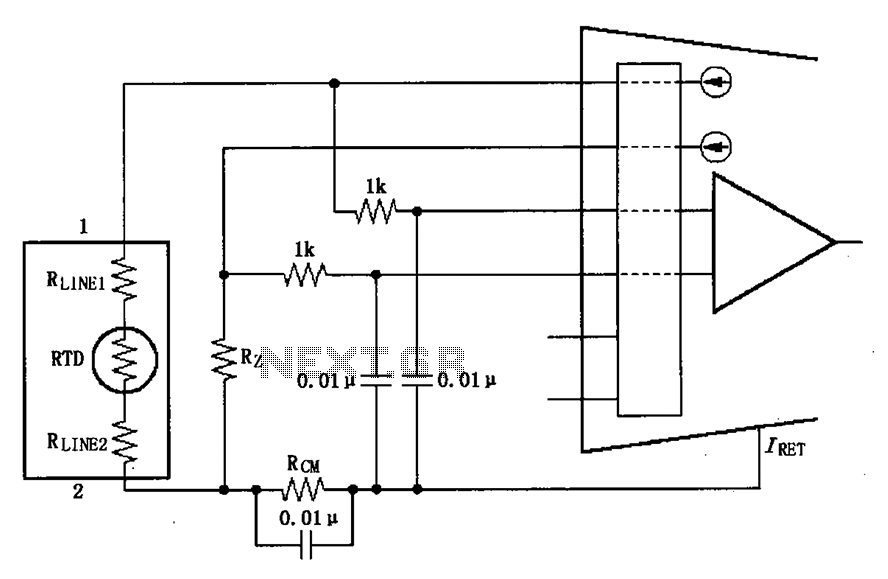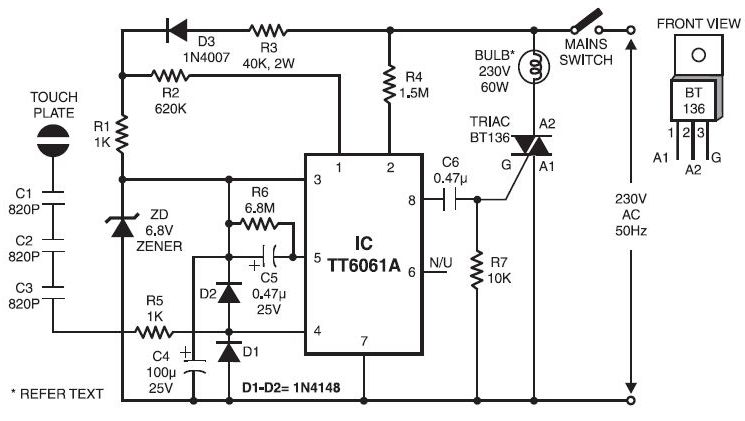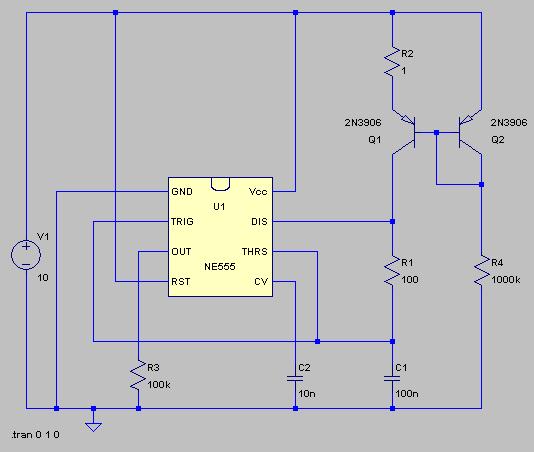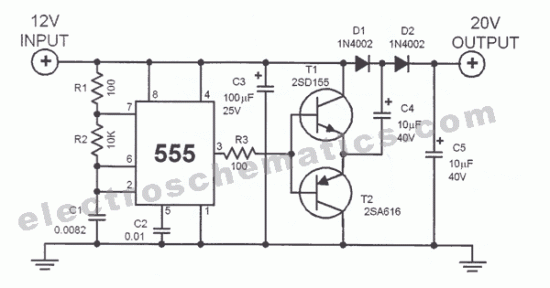
Simple vu Meter Analog Circuit
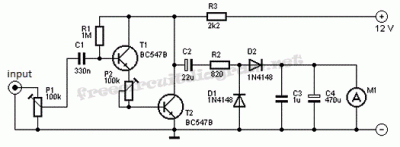
This is a VU meter analog circuit. The circuit is connected to the line terminals of the amplifier. The VU meter operates simply, with T1 and T2 indicating signal increases.
The VU meter circuit is designed to visually represent audio signal levels, providing a useful tool for monitoring sound output in audio applications. The circuit typically employs a moving coil meter, which is calibrated to respond to the average level of the audio signal rather than its peak values.
In this configuration, T1 and T2 are crucial components that serve as signal level detectors. They are often transistors or operational amplifiers that amplify the audio signal before it is fed to the meter. The connection to the amplifier's line terminals ensures that the circuit can accurately measure the output signal, allowing for real-time monitoring.
The circuit may also include resistors and capacitors that form a low-pass filter, smoothing out rapid fluctuations in the audio signal to provide a more stable reading on the VU meter. The meter itself is typically calibrated in decibels (dB) to provide a standardized reading of the audio level.
Furthermore, to enhance the functionality of the VU meter, additional features such as LED indicators or a peak hold circuit can be integrated. These features improve visibility and allow for better interpretation of the audio levels being monitored.
Overall, the VU meter analog circuit is a fundamental tool in audio engineering, enabling users to maintain optimal sound levels and ensure high-quality audio output.Here is vu meter analog circuit. The circuit is left connected to the line terminals of the amplifier. The VU meter is quite simple. T1 and T2 signal increase 🔗 External reference
The VU meter circuit is designed to visually represent audio signal levels, providing a useful tool for monitoring sound output in audio applications. The circuit typically employs a moving coil meter, which is calibrated to respond to the average level of the audio signal rather than its peak values.
In this configuration, T1 and T2 are crucial components that serve as signal level detectors. They are often transistors or operational amplifiers that amplify the audio signal before it is fed to the meter. The connection to the amplifier's line terminals ensures that the circuit can accurately measure the output signal, allowing for real-time monitoring.
The circuit may also include resistors and capacitors that form a low-pass filter, smoothing out rapid fluctuations in the audio signal to provide a more stable reading on the VU meter. The meter itself is typically calibrated in decibels (dB) to provide a standardized reading of the audio level.
Furthermore, to enhance the functionality of the VU meter, additional features such as LED indicators or a peak hold circuit can be integrated. These features improve visibility and allow for better interpretation of the audio levels being monitored.
Overall, the VU meter analog circuit is a fundamental tool in audio engineering, enabling users to maintain optimal sound levels and ensure high-quality audio output.Here is vu meter analog circuit. The circuit is left connected to the line terminals of the amplifier. The VU meter is quite simple. T1 and T2 signal increase 🔗 External reference

